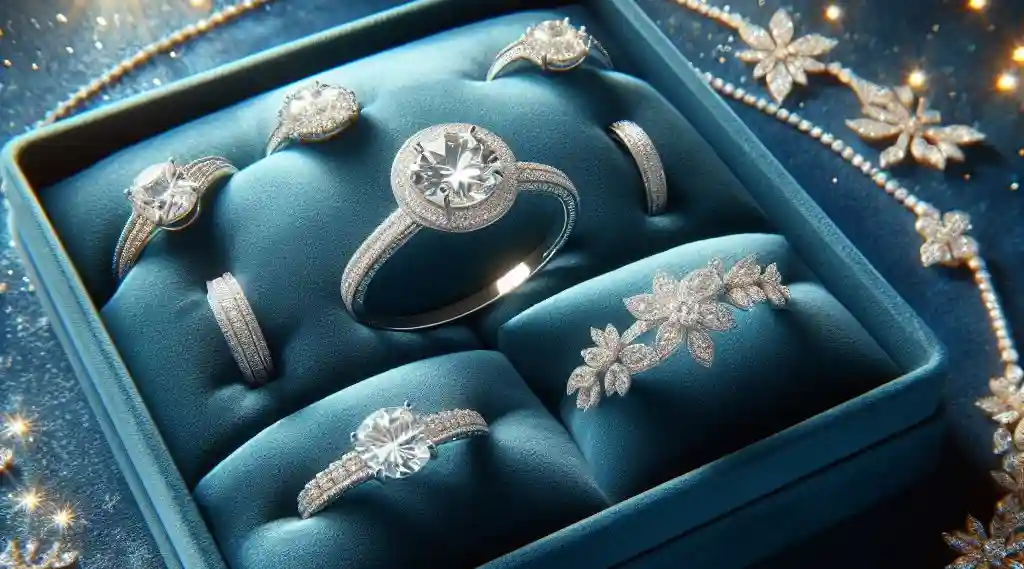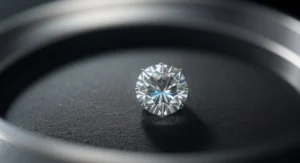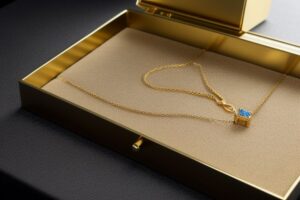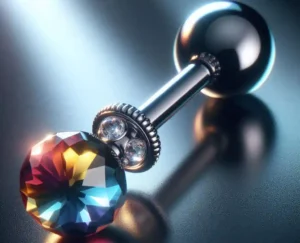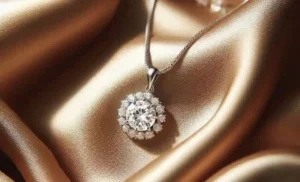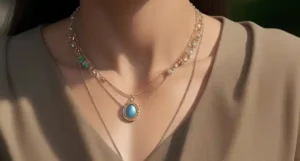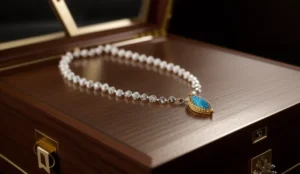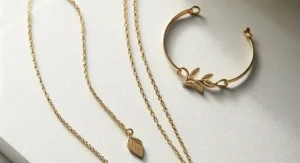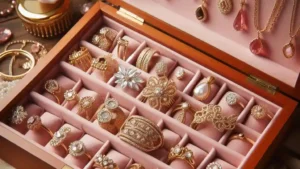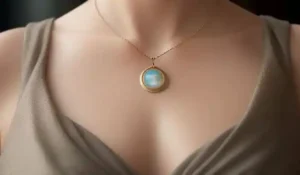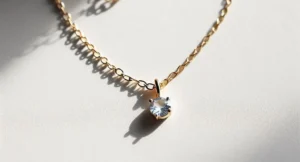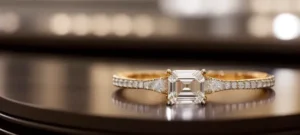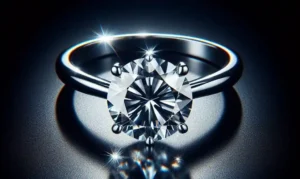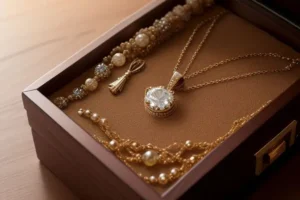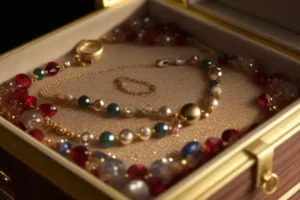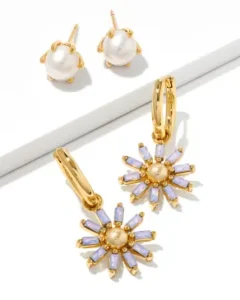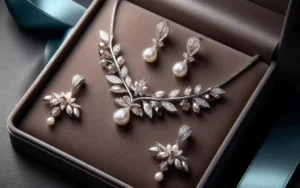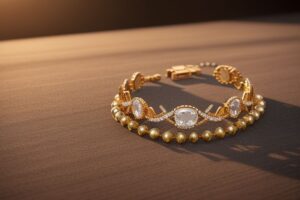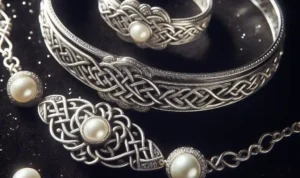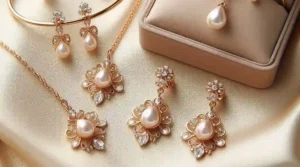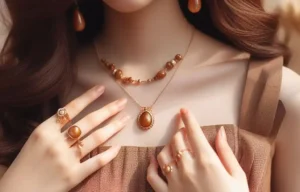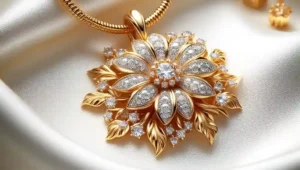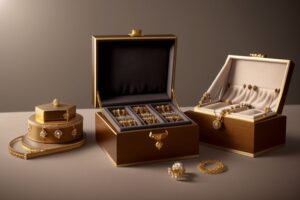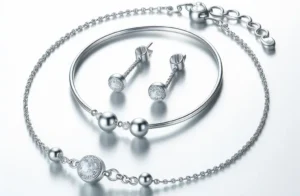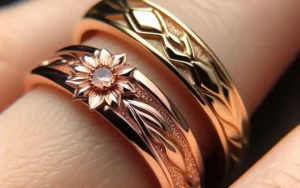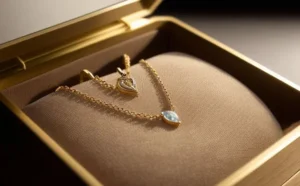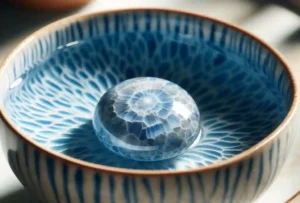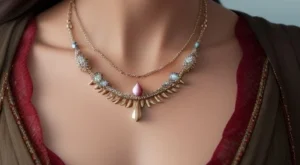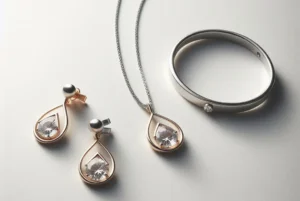Why Do Diamonds Need to Breathe? In the intricate world of jewelry, diamonds have always held a mesmerizing charm, captivating the hearts of many with their unparalleled brilliance and timeless beauty.
Yet, there’s a fascinating aspect to these precious stones that often goes unnoticed by many enthusiasts: the need for diamonds to “breathe.”
Through a detailed exploration, we’ll unravel this mystery, shedding light on the intricate relationship between diamonds, their settings, and the captivating sparkle that defines them.
Why Do Diamonds Need to Breathe?
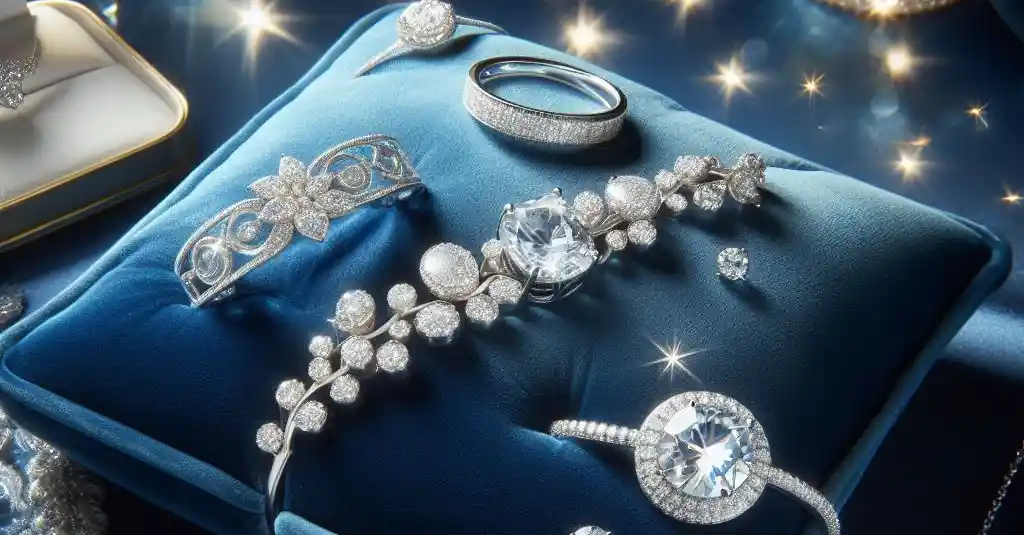
– Optimal Light Interaction: A diamond’s breathtaking sparkle is the result of intricate interactions with light. For these interactions to occur unimpeded, a diamond must be set in a way that light can freely enter and exit, mimicking the effect of breathing. This unrestricted flow is crucial for maximizing the stone’s brilliance and fire.
– Enhanced Visual Appeal: Diamonds are celebrated for their stunning visual characteristics, which are significantly enhanced through proper setting choices. Breathability ensures that these precious stones can exhibit their full visual potential, drawing in and reflecting light in a way that enhances their natural beauty.
– Preservation of Value: A diamond’s value is closely tied to its aesthetic qualities, including its clarity, color, cut, and the way it interacts with light. By facilitating breathability in its setting, the inherent value of the diamond is preserved and can even be enhanced, ensuring that its allure remains undiminished over time.
– Maintenance and Durability: Adequate breathability helps in maintaining the diamond’s cleanliness and sparkle by preventing the buildup of oils, dust, and debris. This not only makes the diamond easier to clean but also contributes to its overall durability by reducing the risks associated with trapped moisture and contaminants.
Unveiling the Concept: What Does it Mean for Diamonds to Breathe?
Delving deeper into the essence of a diamond’s brilliance, the concept of breathability emerges as a cornerstone of its visual allure. At its core, this phenomenon hinges on the diamond’s interaction with light, a dance of luminosity that brings the stone to life.
The term “breathability” encapsulates the necessity for a diamond setting that facilitates uninhibited passage of light, ensuring that every facet is bathed in brilliance.
This architectural requirement is not about the physical need for air but rather the metaphorical space that allows light to travel freely within the diamond, reflecting off its internal planes and emerging as a radiant sparkle.
The notion of a diamond breathing, thus, translates to the meticulous engineering behind jewelry design, where the symbiotic relationship between light and structure plays a pivotal role.
It is this delicate balance that amplifies the natural radiance of the diamond, enhancing its ethereal beauty and affirming its status as a symbol of enduring elegance.
The Science of Sparkle: How Light Plays a Role
The luminous allure of a diamond, captivating observers with its dazzling display, is not solely an inherent characteristic but a fascinating orchestration of light’s interaction with the gem. Central to this spectacle is the science of optics, which delineates how light, upon entering the diamond, embarks on a transformative journey.
It undergoes reflection, where it bounces off the internal surfaces, and refraction, where its path bends within the diamond, together with dispersion, which scatters light into its spectral colors.
The precision with which a diamond is cut profoundly influences this interplay, dictating the angles at which light is absorbed and the manner it is emitted.
A meticulously cut diamond, optimized for light performance, showcases a superior brilliance, its facets arranged in harmonious alignment to capture and radiate light most effectively.
This intricate relationship between light and diamond reveals the profound impact of optical principles on a diamond’s scintillating beauty, highlighting the critical role of craftsmanship in enhancing the natural splendor of this cherished gem.
Setting the Stage: The Impact of Mounting on Diamond Breathability
The choice of mounting plays a pivotal role in a diamond’s brilliance, fundamentally impacting its ability to interact with light. Open and minimal settings, such as prong and bezel styles, are instrumental in maximizing the stone’s luminous potential by facilitating the entry and dispersion of light from various angles.
These settings essentially act as stages that showcase the diamond’s scintillating performance, allowing it to capture light efficiently and sparkle to its fullest capacity. In contrast, more enclosed settings can inadvertently restrict the flow of light, thereby muffling the diamond’s natural brilliance.
Such designs, while potentially appealing for their aesthetic or protective qualities, may compromise the gem’s vibrant display.
The interplay between the diamond and its mounting is a delicate balance of form and function, where the design’s architectural integrity must harmonize with optical principles to illuminate the diamond’s true radiance.
This understanding informs a thoughtful selection process, where the compatibility of diamond and setting is carefully considered to ensure that each gem can truly breathe and shine.
The Perils of Neglect: How Lack of Air Affects Diamond Maintenance
A diamond’s sparkle is not merely a function of its cut and clarity but also of its ability to maintain cleanliness and luster over time.
Settings that constrict airflow around the diamond inadvertently create environments conducive to the accumulation of moisture and debris.
This not only diminishes the stone’s brilliance but also makes routine cleaning a more cumbersome task. The lack of sufficient air circulation can lead to a buildup of substances that, if left unaddressed, obscure the diamond’s natural beauty and reduce its sparkle.
Consequently, the maintenance of such pieces demands more frequent professional care to restore their original luminosity.
This scenario highlights the critical importance of selecting a setting that not only showcases the diamond’s aesthetic qualities but also facilitates easy upkeep, ensuring that the gem remains as radiant as the day it was purchased.
Beyond the Surface: The Role of Ventilation in Diamond Longevity
The importance of a well-ventilated setting transcends the immediate visual appeal of a diamond, extending its significance to the gemstone’s durability over time.
Proper ventilation mitigates the risk of detrimental elements that could mar both the diamond and its housing, emphasizing the need for a design that anticipates long-term exposure to various conditions.
Airflow around the diamond reduces the likelihood of corrosive substances taking hold, preserving the integrity of both the stone and its mount.
This aspect of jewelry design is crucial, as it not only maintains the aesthetic and structural qualities of the diamond but also safeguards its value and longevity.
By prioritizing settings that promote adequate air circulation, one ensures that the diamond remains resilient against environmental challenges, thereby extending its life and luster. This proactive approach to diamond care underscores the nuanced considerations that contribute to the enduring legacy of these cherished gems.
The Art of Selection: Choosing the Right Setting for Maximum Brilliance
Navigating through the myriad options of diamond settings requires a blend of aesthetic discernment and an understanding of functional design principles. The perfect setting not only complements the diamond’s inherent beauty but also amplifies its brilliance through strategic light optimization.
Jewelers and designers are pivotal in guiding enthusiasts towards making informed choices that align with their personal style while ensuring the gem’s luminosity is not compromised.
This selection process entails considering the interplay between the diamond’s shape, the metal’s reflectivity, and the setting’s capacity to facilitate unobstructed light passage. The goal is to achieve a harmonious balance that accentuates the diamond’s best features, enhances its visual performance, and promotes longevity.
Opting for designs that allow for adequate air and light circulation can dramatically influence the stone’s sparkle and maintenance ease.
Thus, the artistry behind selecting the right setting is a testament to one’s appreciation of the nuanced relationship between form, function, and the ethereal dance of light within the confines of a diamond.
A Breath of Fresh Air: Innovative Designs in Modern Diamond Jewelry
The landscape of modern diamond jewelry is witnessing a renaissance, fueled by avant-garde designers who are blending aesthetic elegance with functional innovation.
These contemporary creators are pushing the boundaries of traditional settings, exploring the use of novel materials and crafting designs that not only protect the diamond but significantly enhance its light performance.
By introducing structures that maximize airflow and light penetration, these innovative designs ensure that each diamond’s natural brilliance is not just preserved but elevated.
The evolution of diamond jewelry now emphasizes settings that promote both the gem’s luminosity and its longevity, addressing the holistic needs of the modern wearer.
This shift towards designs that consider the diamond’s need to interact freely with light represents a profound appreciation for the interplay between form and function.
As such, these advancements are setting new benchmarks for what is considered the epitome of beauty and brilliance in diamond jewelry, offering a glimpse into the future where the elegance of a diamond is seamlessly fused with cutting-edge design principles.
Care and Maintenance: Tips for Keeping Your Diamonds Breathing Freely
Ensuring the luminous vibrancy of your diamond jewelry extends beyond mere aesthetic admiration to embody a ritual of preservation. Regular maintenance is pivotal, not just for the cleanliness of the gem but for sustaining its interaction with light—its breath.
A gentle cleansing routine using a soft-bristled brush and lukewarm soapy water can effectively remove accumulated oils and residues that cloud the diamond’s surface, thereby obstructing its brilliance. This simple yet crucial act facilitates the unhindered passage of light, crucial for the diamond’s scintillating performance.
Additionally, periodic consultations with a professional jeweler can identify any adjustments needed to optimize the setting for light penetration. These experts can ensure the mount continues to offer the structural support while maintaining the essential openness that allows your diamond to sparkle to its fullest potential.
This approach to care, focused on both cleanliness and structural integrity, plays a significant role in preserving the diamond’s dazzling display and ensuring its enduring beauty shines through, untarnished by time or neglect.
FAQs
Q: Is it possible to enhance a diamond’s breathability after it has been set?
A: Depending on the initial design and how the diamond has been mounted, adjustments can often be made by a skilled jeweler to improve breathability. This process may involve altering the setting to allow more light to pass through and interact with the diamond, thereby enhancing its sparkle.
Q: How does the size of the diamond influence its need for breathability?
A: While breathability is a universal requirement for diamonds to exhibit their full brilliance, larger diamonds might display a more noticeable enhancement in sparkle when their settings are optimized for light interaction. Nevertheless, achieving the right balance of light passage is critical for diamonds of all sizes to ensure they shine brightly.
Q: Do certain cuts or shapes of diamonds naturally have better breathability?
A: The cut and shape of a diamond do play roles in its light performance; however, the setting’s design is paramount in facilitating breathability. An expertly chosen and crafted setting can make a significant difference in allowing light to interact effectively with the diamond, regardless of its shape or cut.

